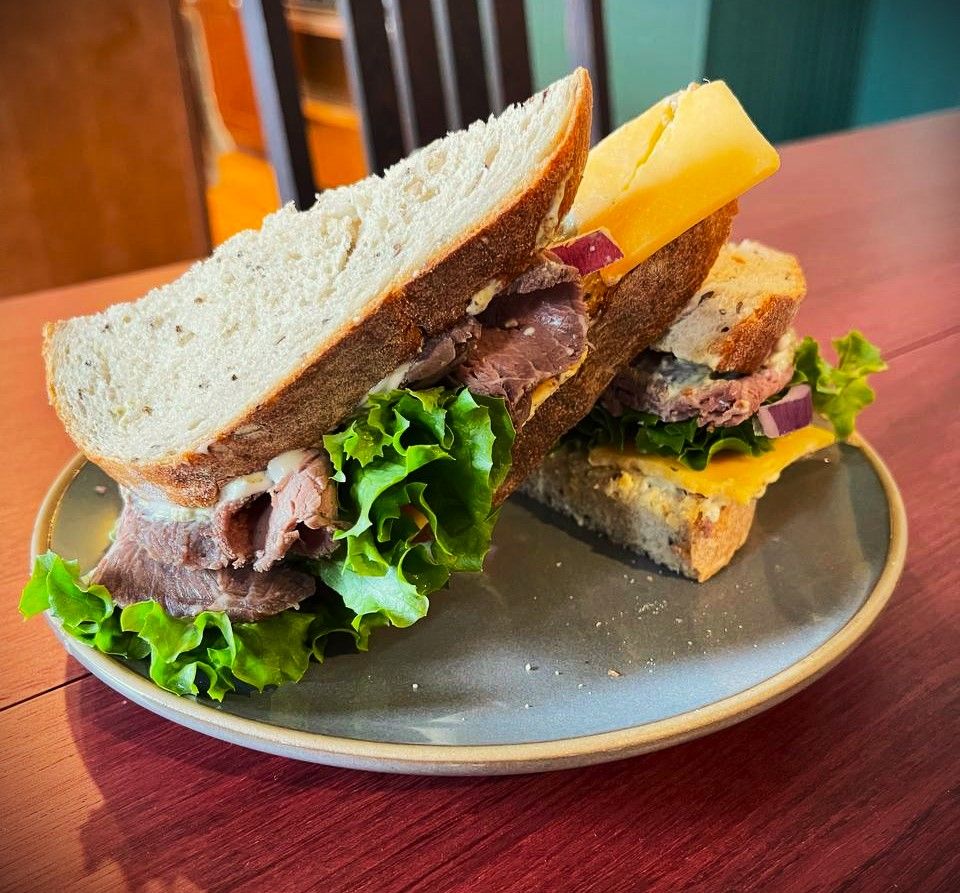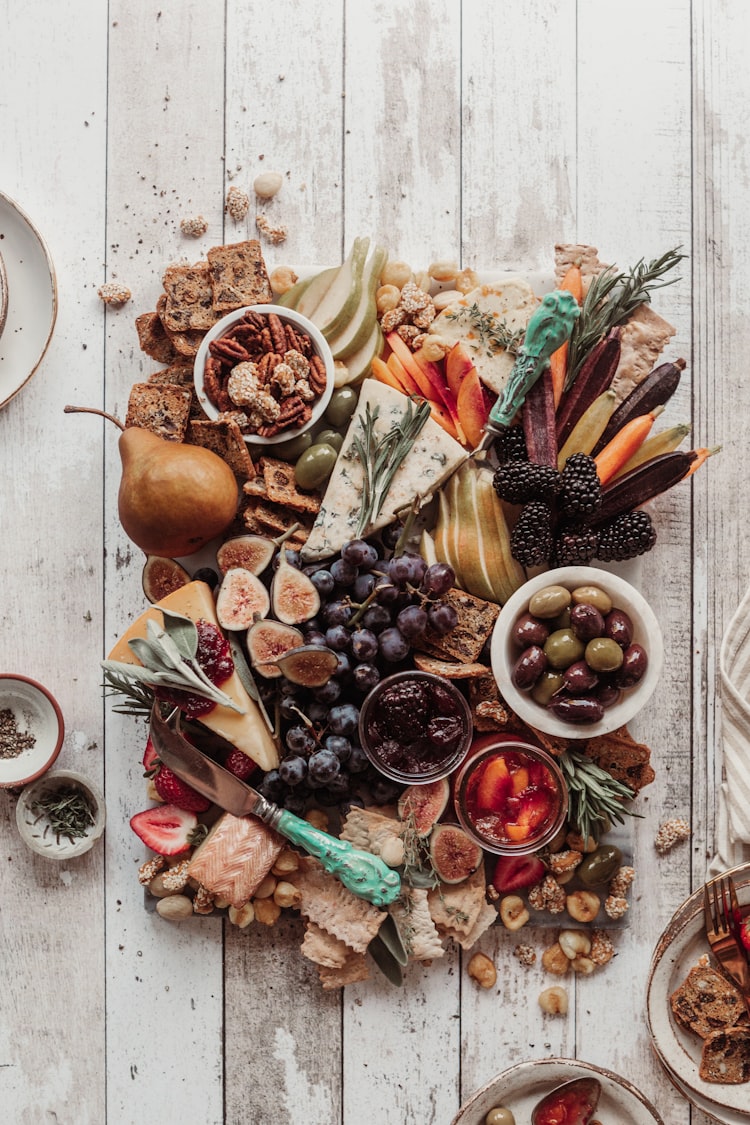Ode to a Grocery Store Sandwich

Meg Elison is a Philip K. Dick and Locus award winning author, as well as a Hugo, Nebula, Sturgeon, and Otherwise awards finalist. A prolific short story writer and essayist, Elison has been published in Slate, McSweeney’s, Fantasy & Science Fiction, Fangoria, Uncanny, Lightspeed, Nightmare, and Best American Science Fiction and Fantasy. Elison is a high school dropout and a graduate of UC Berkeley. Find Meg on Twitter and Instagram.
I grew up afraid of the grocery store, as I imagine most hungry children do. I was always worried the pitiless eyes of the upstairs offices could tell I was both hungry and poor, posing a threat to the merchandise and to the order that decrees even hungry children need to pay. Coins counted in a calloused palm and always last-minute sacrifices removed from the bag, I remember the grocery store as an ache on top of hunger, a scorching shame and a tragically visible vulnerability; when you fail at the checkout counter of your neighborhood market, everybody knows. I adjusted and time moved on. I learned to do the math in the cart, adding tax and keeping an exacting relationship with my bank account balance before approaching the black belt conveyor.
This fear and watchful certainty of degradation by the pound kept me away from the outer edges of a good supermarket: the butcher counter, the bakery, and the deli. It is only because of this that I did not discover the joy of a grocery store deli sandwich until I was nearly an adult.
High school theater wrings endless hours of labor from the energy and inexperience of youth, and I did not know I was supposed to pack something to eat for rehearsals that went long and late. Always a free lunch kid, I would simply suffer through the dinner hours most nights, or accept a granola bar from someone who could hear my bones grinding as they grew and understood that they could stop the sound with a few calories.
A friend’s mother got wise to the lack in my life and brought dinner for her own child, incidentally and accidentally bringing me something, too. It was cupped in flat-packed Styrofoam plate, in those days before the packaging laws came for our snowy thoughtless foams, and trapped beneath a layer of stretchy clingfilm. I didn’t know what to say. (Try not to admonish poor and hungry children for their lack of manners; gratitude and shame are twin sisters.) Someone else’s concerned mother had chosen for me, guessing and not knowing. I had no food allergies and precious few preferences back then; a roast beef on rye was a most welcome sight. Meat piled high and cheese stacked deep, it was also packed with crisp butter lettuce and sliced tomato. Packets of mayo and mustard lay under the halves, leaving oblong impressions in the soft seeded rye.
Memories of food are often insubstantial and laughable— who looks back at their Instagram history and sighs over that plate of nachos from four years ago? But the feeling I invest in the memory of that sandwich fills me with turbulent emotion even now. It is the platonic ideal of sandwich for me, supplanting every temple-status venerable deli I walked to in Manhattan and every banh mi I have ever drunkenly proposed to in L.A. This is the unsullied, immaculate sandwich of my personal pantheon, and will remain ever thus.
I understood by its presentation and labeling that it had come from a grocery store, and that I could have this experience again one day if I had only the courage and about eight dollars in my pocket. I compared it to the memory of the fast food I had clamored for as any child does but which always failed to measure up to its TV commercial representation and lacked something specific and vital in its preparation. No matter how towering the hamburger or overlarge the serving of curly fries, those meals always seemed to have been produced by someone with a grudge. When I served my own tour in the deep fryer basket and headset trenches, I understood why. Fast food is prepared by the most underappreciated ranks of American laborers and served to people who believe they deserve no better. I had not known I could have something kinder without spending more money. I knew after that day.
Regret for one’s own childhood is as unoriginal as a boutonniere that sprays seltzer in the eye and in most cases just as moving. So it is best to be brief and specific: as an adult, I encountered a meme photo of a ham and cheese sandwich on white bread, a bag of Doritos, and a juice box. The text indicated that it was the kind of lunch that “hit different” after a full day of swimming in a pool. Physically, I summoned the emotional state I remembered from summer days in southern California: the burning of chlorine in my membranes and sclera, the core-deep cold of having been in the water all day and the searing sensation of sun on my skin for just as long. Most of all the unqualified exhaustion of a continuous full-body exertion for eight or ten hours of swim tag, handstands, diving and floating. Pulling that state into my body was simple, a known condition of a thousand sunshot days. But I could not subpoena the follow up: the satisfaction of lunch packed for me by someone who loved me and knew I was hungry. It was not an experience I ever had.
In nearly every grocery store in America, I can have that sandwich now. My local chain makes them up every morning out of Boar’s Head meats and cheeses, on marbled and whole-grain sliced bread, each one featuring a victory garden of produce. My hand hovers above pepper turkey and gouda, listing toward ham and havarti with dill, pulled by habit and favoritism toward roast beef and cheddar cheese on a toothsome, seedy-grainy loaf.
The quality of labor behind foodstuffs is a fraught question in my country, where undocumented immigrants plant and harvest most of our crops for the privilege of being vilified and underpaid and treated to ghastly injustices with broad impunity. Having worked in the lowest rungs of labor available to the documented American (fast food, hospitality, domestic labor, sex work) I can tell you that things are marginally better with a passport, but the margin is slim. Grocery store workers are many steps above that rung on the rusty ladder that is our workforce; many of them are unionized and many more work in employee-owned chains. Perhaps it is this difference that makes a grocery store sandwich almost like one made with care by one’s own mother, on an endless blue-watered day.
Like a bad parent, I of course have my favorites. My local store offers wraps for the carb-conscious, tight and thin spinach-pretender tortillas and lavash in place of the winter wheat and pumpernickel of motherly love. These they pack with tempting cheeses: visible curds of bleu and clumps of feta. It isn’t worth it. Likewise the miniature sandwiches served on picnic rolls, a bread so sweet it almost counts as cake. The umami ache of yeast is lost in all the rush to sugar, and the sandwich filling, however bold, is rendered ridiculous as those carnival offerings pressed between two donuts and deep-fried. The sub is a roll of the dice, made on whatever dutch crunch or sourdough baguette the in-store bakery offers up on that day. One must look closely to see if the torpedo is properly armed or merely a dud. On a sweet french roll, spicy turkey sandwiches and the Italian flavor profiles are divine. But most others are lost, sunk in a sea of bread.
The psychic weight of a sandwich that looks like it might have come from your own home kitchen is heavy, dense as a dying star. Slipped into a lunchbox or a paper bag, it takes on the unmistakable freight of significance; more symbol than sustenance. I do this for myself now, just as I have learned to speak to myself with kindness, to allow myself to fail and try again, as I have gently undone and redone all the things a good parent is supposed to do and mine did not. Time doesn’t heal all wounds unless you’re doing the stitches while you watch the clock. That’s therapy and self-talk and building a community. And sandwiches. Not made by myself, but made with care and picked up at the clean, well-lighted store without shame or a glance at my banking app.
Hefty in a paper bag, I take it with me to the beach and swim until my limbs are as heavy as if they were filled with cement, until my eyes are bleary and crusted with salt. Blue-lipped and shivering, I find my way back to my place with my towel and my umbrella and my packed lunch. I find a pair of teenagers, care-worn and alone. Huddled together without anything to shield them from the sea or the wind or the world, they look as if they haven’t got a plan or anyone to call except one another. They’re not unhappy, but their wrists are knobbed and their hoodies show me the gentle speed-bump slopes of their ribs when the wind flattens the fabric down.
When I offer them the bag, they accept. It’s alright; I know where to get another just like it.
Meg’s Roast Beef Sandwich, Grocery Store Style

This recipe will allow you to recreate the perfection of a grocery-store-deli roast beef sandwich. Prepared as written, it produces one serving.
Get the Recipe: PDF, Google Doc
If you’d like to own the Personal Canons Cookbook ebook, which collects all these essays and recipes in easy-to-reference, clickable format—plus loads of bonus recipes from me!—join the Stone Soup Supper Club. The ebook is free for subscribers, who will get the download link in their inboxes in the first Supper Club email of 2024!
Remember: Care for yourself and the people around you. Believe that the world can be better than it is now. Never give up.
—Gailey






Member discussion